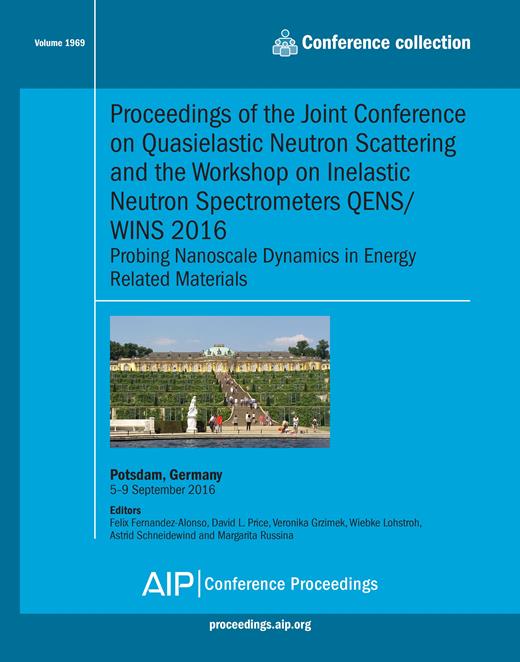
Authors (5): I. P. Silverwood, M. A. Arán, I. Lezcano-González, A. B. Kroner, A. M. Beale
Themes: Design DOI: 10.1063/1.5039294
Citations: 2
Pub type: paper-conference
Pub year: 2018
Publisher: AIP Conference Proceedings
Issue:
License:
Publication date(s): 2018 (print)
Pages:
Volume: Issue:
Journal: AIP Conference Proceedings
Link: http://aip.scitation.org/doi/pdf/10.1063/1.5039294
URL: http://dx.doi.org/10.1063/1.5039294There is commercial interest in understanding the deactivation of Mo loaded H-ZSM-5 catalyst by coke fouling during the methane dehydroaromatization reaction (MDA). The effect of coke on methane diffusion inside the zeolite pores was studied by quasielastic neutron scattering (QENS) measurements on Mo/H-ZSM-5 samples reacted with methane for 0, 7, 25 and 60 min. Catalytic activity of the samples followed by mass spectrometry indicate that the induction period in which Mo species are carburized lasts for ∼9 min; after this period the material shows selectivity to aromatics. Characterization by TGA and N2physisorption suggest that practically no carbon is deposited during the induction period. The ∼2 wt % of coke formed after one hour of reaction has a negligible effect in the zeolite crystal structurebut a small effect on the micropore volume. The QENS studies show that the methane transport by jump diffusion is however not measurably affected by the accumulated coke in the samples.
There are no objects associated to this publication
<< Previous Back Next >>